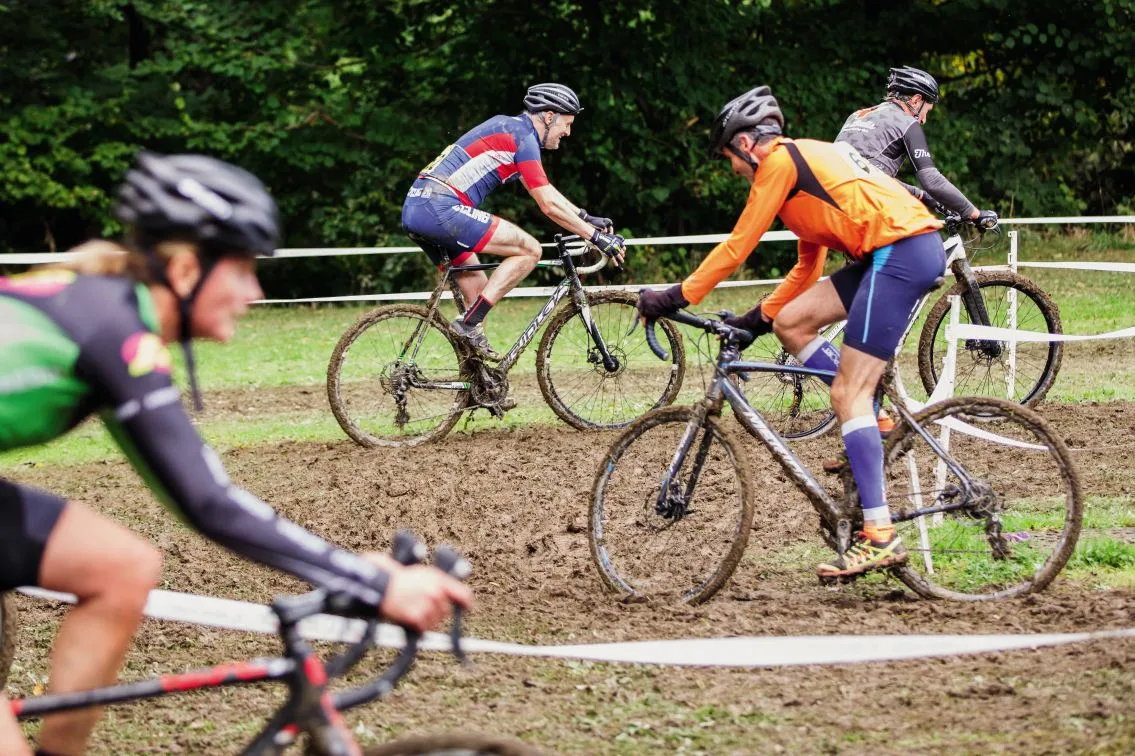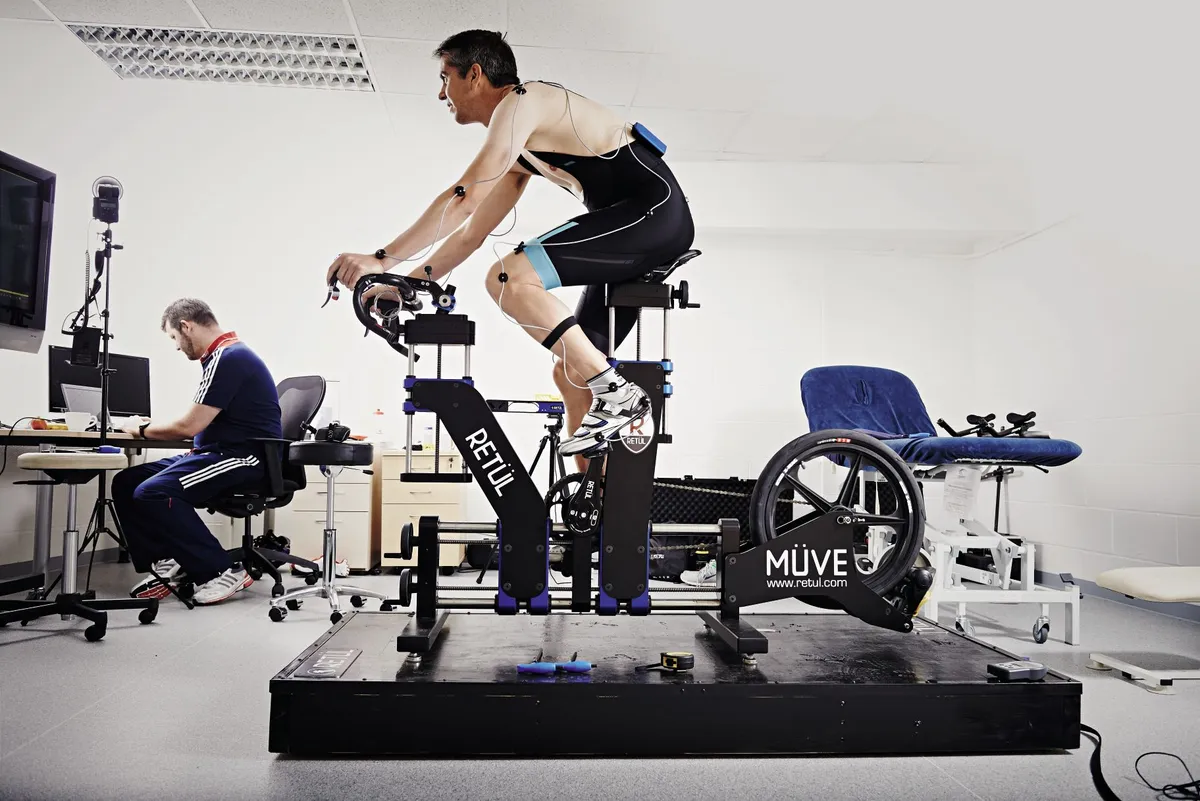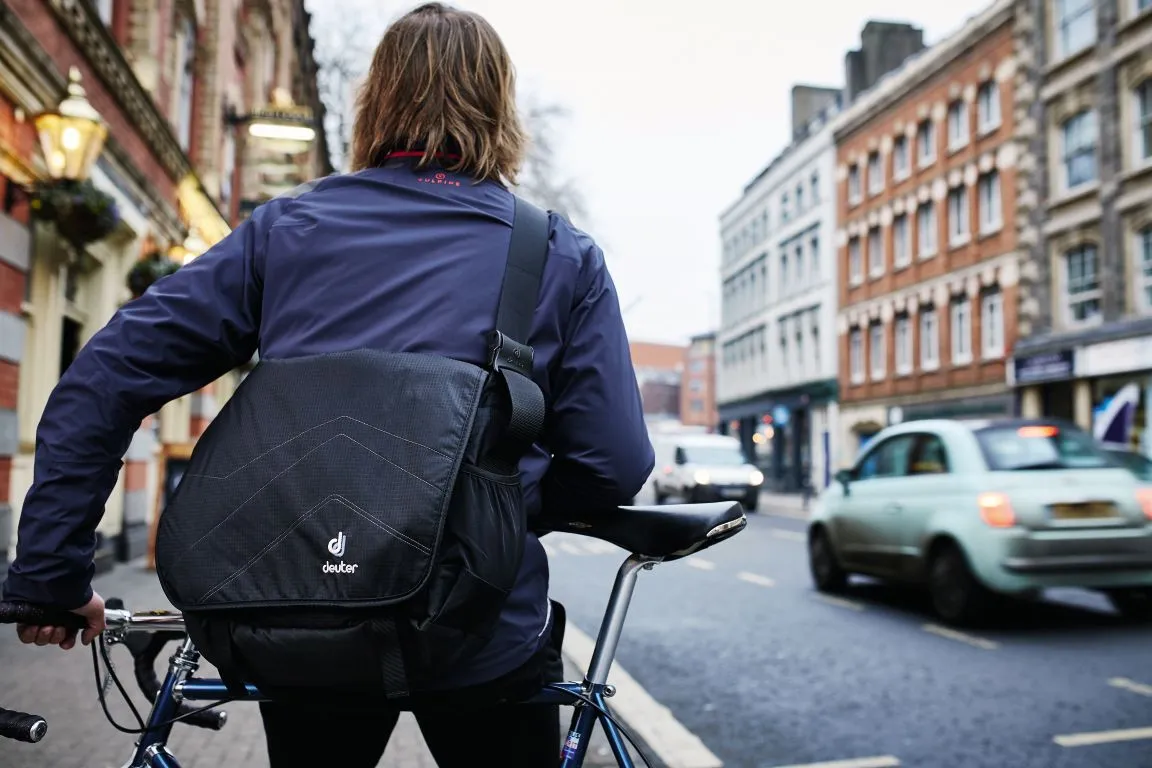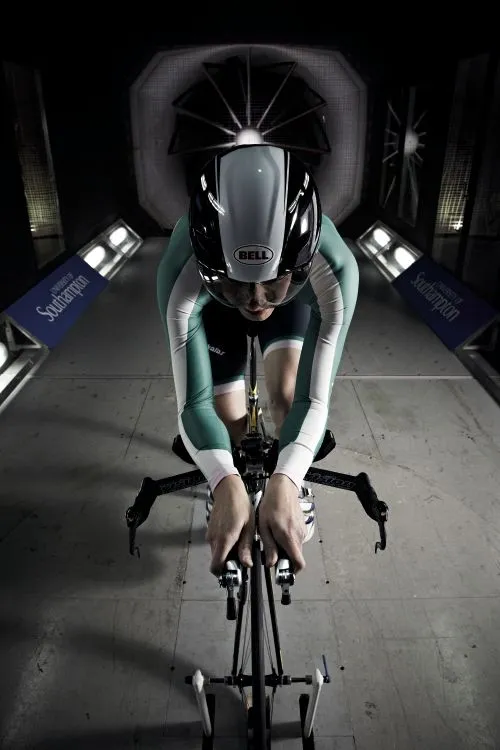Nutrition from issue one
The 1990s are recognised as the decade where we started to care more about our diets, especially those of us interested in exercise and training. We started drinking more skimmed milk than full fat in the ’90s and bagged salads were introduced to supermarkets. On the flip side it was also the decade of Sunny Delight… In 1992, Cycling Plus was reasonably light on nutritional knowhow. So much so in fact the Fast Food nutrition regular introduced in issue one lasted, erm, one issue. It did include eggcellent advice though!
That’s so 1992...
Eggs are an easy way to get protein into your diet. They also provide an excellent range of amino acids to help regulate the metabolic processes and muscle structure. Eggs contain vitamin B, which is important to working muscles as it helps release energy from carbohydrates and fat. Eggs will also provide you with iron, folate and vitamin B12, which assist in the formation of the red blood cells that transport oxygen. Don’t worry about the cholesterol in eggs – it’s saturated fat you should restrict while keeping fat below 35 per cent of your energy intake.
Timeless advice?
Absolutely, 25 years on and we’re still egging you on to eat eggs. Cycling Plus's sports nutritionist Will Girling says “With a protein digestibility score of 97 per cent, eggs also provide all nine of the amino acids needed to promote muscle recovery and the building of lean tissue.” Will agreed with our ’90s take on eggs and cholesterol. “The American Heart Association has announced that consuming eggs has no ties to increased cholesterol or cardiac consequences.”
Cyclocross from issue one

Issue one started a recurring theme – the exhortation that you, dear reader, really should embrace the wacky ways of cyclo-cross. We’re not alone – apparently there are other cycling titles out there and they, we’ve heard, also encourage the take up of ’cross (just not as well as us, of course). Men’s magazines and broadsheets frequently promote what’s regularly referred to as “the fastest growing cycling discipline” too. A quarter of century on and it’s finally sinking in…
That’s so 1992...
Cyclo-cross provides a psychological boost during the winter as simply training on the road and cross training can become boring while the summer season is a long way off [CP’s training advice in ’92 was geared towards racing cyclists]. Cyclo-cross gives you the chance to enjoy some low-key weekend racing with no pressure. You’ll be able to find cyclo-cross races close by and they don’t last too long – an hour of cyclo-cross racing is worth three hours of training on the road. They’re the perfect way to keep you motivated, and you’ll lose less of your fitness over winter, which will help come the summer racing season.
Timeless advice?
We certainly think so and, obviously, still run features about what is a truly fun and friendly sport. More importantly we feel that cyclo-cross is a perfect introduction to bike racing – a huge amount of dirty fun, no cars, a soft landing if you crash – a short but effective workout and an excellent way to improve your bike handling skills. “I rode my first cyclo-cross race just a couple of year's ago,” says Content Director Rob Spedding. “And I’m not sure why I hadn’t tried it earlier. It was hard work but incredibly rewarding and, best of all, it was all done and dusted in just under an hour.”
Riding in the rain from issue one
Cycling Plus has always been proud of its Britishness. (Take that how you want to in 2020/21…) And nothing is more British than talking about the weather and, specifically, rain. In issue one we offered no less than 32 tips on riding in the wet, highlights included…
That’s so 1992...
Wear a helmet – you’re more likely to have a spill in wet weather and even if you don’t crash a helmet will also keep your head warm. Give yourself extra time to brake as the brakes will take time to clear water as they contact the rim. Fresh rain is the most dangerous, especially after a dry spell. The first rain lifts accumulated grease and grime off the road surface, creating a mixture that’s almost frictionless. Choose grippy compound tyres instead of looking for extra tread – soft compounds grip better than hard ones. Fit fatter tyres – 28-32mm – as they’re better at lower pressure, and will protect your rims from pothole damage. And look out for metal such as manhole covers and road markings as they’re more slippery in the wet.

Timeless advice?
Does it still rain in the UK? Do bears still…? You get the idea – our 1992 wet riding advice is still relevant. With global warming one of the, erm, hottest current topics it could be argued that it’s even more pertinent in 2017. According to the Met Office, for example, December 2015 was the wettest calendar month in the UK since its records began in 1910. Some of the tips from ’92 seem quite quaint though. Don’t junk pedal reflectors as they help provide extra visibility for instance. Hands up if you still have pedals with reflectors? Thought not. You’ve got clipless pedals haven’t you, which according to issue one were “ideal for riding in the wet and cold as the absence of straps helps maintain blood flow to the toes.”
While on the subject of bad weather and feet, elsewhere in 1992 Chris Boardman offered this – not especially scientific sounding – pearl of wisdom: “If it’s particularly cold wrap some newspaper round your toes, folding it around the front half of the foot before putting your shoe on.” Boardman claimed that he used a picture of his biggest rival at the time, Graeme Obree, for such a purpose at one race…
Bike fit from issue one
Right from the get-go we were keen to promote the idea of making sure that you and your bicycle were a physiological match made in heaven, and in issue one we looked at two different ways of perfecting your fit. First up the Genzling-Hinault do-it-yourself system, which, to our modern-day-instant-gratification-please mindset, looks complicated and time consuming. And anyway, we’ve lost our set square. The second system is more familiar as it involved seeing a Bioracer expert for a fitting. The Belgian clothing brand still lists bike fitting as a service on its website…
That’s so 1992...
Getting your bike fit correct is essential for maximising performance and avoiding injury. Perfecting the right mix of saddle height, bar height and reach to the bar can mean the difference between comfort and pain. You may not realise that fit is an issue until you get a problem.

Timeless advice?
Put simply, spot on. It doesn’t matter how much you’re spending on a bike, paying a little extra to ensure that you get the right size for you before you ride away from the store (or – and this would have blown our 1992 minds – unpacked after you’d had it delivered following making an order on a home computer) will be one of the best cycling investments you’ll ever make. Fast forward 28 years from 1992 and it’s easier than ever. Any bike shop worth its salt will provide a fitting service and the rise of the machines means that computerised systems such as Retul, Guru, bikefitting.com, Specialized Body Geometry and Trek Fit are widely available.
Training zones from issue two
In 1992 a 23-year-old carpenter from the Wirral and his coach changed British cycling (and British Cycling…) forever. The carpenter was Chris Boardman, whose stunning performance in the individual pursuit at the Barcelona Olympics won Britain’s first Olympic cycling gold for 72 years, and could be argued to have laid the foundations for today’s astonishing success of our athletes. How? The coach was Peter Keen who became performance director at British Cycling (BC) from 1997 to 2003 and employed a chap called David Brailsford…
Boardman was known as ‘The Professor’ because of his scientific approach to cycling. At the time the cutting-edge Mike Burrows-designed Lotus bike got most of the press but Boardman and Keen applied the latest knowhow to training too. Keen’s use of four levels of training intensity based on maximum heart rate was integral and later became BC’s accepted standard for training cyclists and the basis for much of our training advice.
That’s so 1992...
Level 1 is easy riding, at 45 to 50 beats below your maximum heart rate. It should feel like little effort and if you’re well trained can be maintained for several hours. Use to warm up or for active recovery.
Level 2 boosts your endurance and basic aerobic fitness and will help you ride further and faster. It’s even paced, continuous riding at around 40 beats below maximum. Riding at this intensity for 3-5 hours enhances the body’s ability to use fat as fuel.
Level 3 is race pace training and typically a hard effort of around 20-30 minutes at the maximum pace you can maintain. If you feel that you could keep going at the end of the session then you’ve probably not worked hard enough. Typically, your heart rate should be between 15-20bpm below max.
Level 4 is short, high-intensity training. Interval-based efforts of between 30 seconds and three minutes with a full recovery between. This training is at close to your maximum – sprinting and hard climbing for instance.
Timeless advice?
Hell yeah! Using heart rate monitors – which were rare and called pulse meters in the early ’90s – and zones for serious training is still highly relevant. The thinking on heart rate has changed slightly and British Cycling’s training zones are now based on functional threshold – the highest intensity you can hold for an hour – heart rate and/or power. Only a lucky few had access to power measurement in 1992. There are now six zones rather than four and they have names not numbers – active recovery, endurance, tempo, threshold, VO2max and anaerobic capacity. Keen’s levels 3 and 4 are even mainstream – high-intensity interval training, or HIIT, workouts promising you can get fit in just a few minutes a week are increasingly popular.
Riding in traffic from issue 3
Statistics don’t tell the whole story as we’re pretty darned sure there are more cyclists on the road than in the early 1990s, but according to Government figures the number of cycling trips made per person every year since then has actually remained pretty constant. We are cycling further, though – up 26 per cent since 1995. And that means we’re mingling for longer with the increased number of vehicles on the roads – the mileage driven has increased by almost 20 per cent in the last 20 years. So, how does 1992 road sense stack up?

That’s so 1992...
Never be intimidated, you’ve got as much right to be on the road as a BMW, so don’t let them dictate how and where you ride. Don’t ride in the gutter – the more room you have the safer you’ll be and it’s better for cars to go around you than risk catching your pedal on the kerb. Watch out for large vehicles taking corners at the same time as you – what looks like a large gap between a bus and the kerb soon disappears. Don’t overtake large vehicles on corners or stop between a vehicle and the kerb, especially at left turns.
Timeless advice?
One road death, regardless of transport mode, is one death too many, but the most up-to-date Government figures for cycling casualties do actually show that the number of cyclists killed on our roads – 100 in 2015 – is the lowest ever, so it could be argued that we’re safer than in 1992. However, Cycling UK issues a note of caution – the number of serious injuries to cyclists has increased: “The KSI (killed or seriously injured) rate per billion miles has grown significantly over the last 10 years. In 2005, it stood at 875 cyclists per billion miles, but in 2015 rose to 1025.” So, our 1992 safety tips are as timeless as our stereotyping of drivers of Bavarian executive motors!
Aero dressing from issue three
Type “Aero 1992” into W3Catalog (go on, Google it…) and the image search returns lots of pictures of Saabs, but now defunct Swedish car makers weren’t the only ones trying to overcome drag pre-Ask Jeeves. Elite cyclists like Chris Boardman and Graeme Obree were doing their utmost to cheat the wind and so, it seems, were Cycling Plus readers.
That’s so 1992...
Exposed hair and ears will increase drag and don’t set up airflow over your head as well as a helmet – a helmet is also safer. If your helmet has slots then cover them to improve airflow. A non-stretch loose jersey with pockets can slow you down by up to one minute during a 25-mile time trial. A cotton undervest will absorb and retain perspiration, leaving you damp and clammy. A skinsuit isn’t good at getting perspiration out on its own so wear a wicking thermal layer underneath.

Timeless advice?
Of course not, we all know aerodynamics is nonsense right… Oh okay, getting aero is bigger than ever. Brands like Specialized and Ridley have built their own wind tunnels to develop products, while pro athletes and serious amateurs spend time (and money) perfecting their aerodynamics with the use of big fans…
Aerodynamic bikes, wheels, helmets (which are no longer optional if you want to be aero) and clothing – including skinsuits that do wick sweat – are the norm and available for every budget. And those wind tunnels provide excellent information. For instance, in 2014 Specialized told us that the aero advantages of shaving legs could be on average 70 seconds over 25 miles, and that having a beard makes no difference at all. God bless science!
We've been providing great advice since 1992. To get the best tips in the business every month subscribe here!
